3
3488
Guest
I have worked on some imagery from the Galileo Spaceraft of the first two asteroids seen up close in detail, the Main Belt asteroids 951 Gaspra & 243 Ida. Just wanted to put them on here.
Asteroid 951 Gaspra was encountered first on: Tuesday 29th October 1991, passed by at a distance of 1,600 KM over the night side, the sharpest images abtained from 5,300 KM with an impressive resolution of 54 metres. Some 80% of the asteroid was imaged during the approach except for the south polar region which was in darkness, as 951 Gaspra was in Northern Summer / Southern Winter during the pass.
951 Gaspra lacks relatively large craters, has many small ones & also has a few grooves, some 2 km long & are about 400 metres wide.
951 Gaspra has an axial tilt of 72 degrees & it's north celestial pole lies very close to M31 the Andromeda Galaxy.
951 Gaspra is a type S Silicate rich asteroid sized 18 KM by 10.5 KM by 9 KM rotating once every 7 hours & 3 minutes in a prograde direction, west to east as Earth.
951 Gaspra orbits the Sun within the inner part of the Asteroid Belt, with a perihelion: 1.825 AU (barely within the Asteroid Belt), with an aphelion of 2.954 AU, taking 3 years, 3 months & 12 days to orbit the Sun.
951 Gaspra is a member of the Asteroid 7 Flora family & 951 Gaspra is rich in Olivine (a type of basalt) & Pyroxine, a mantle rock.

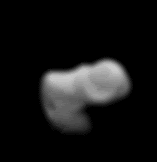
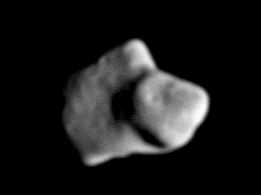
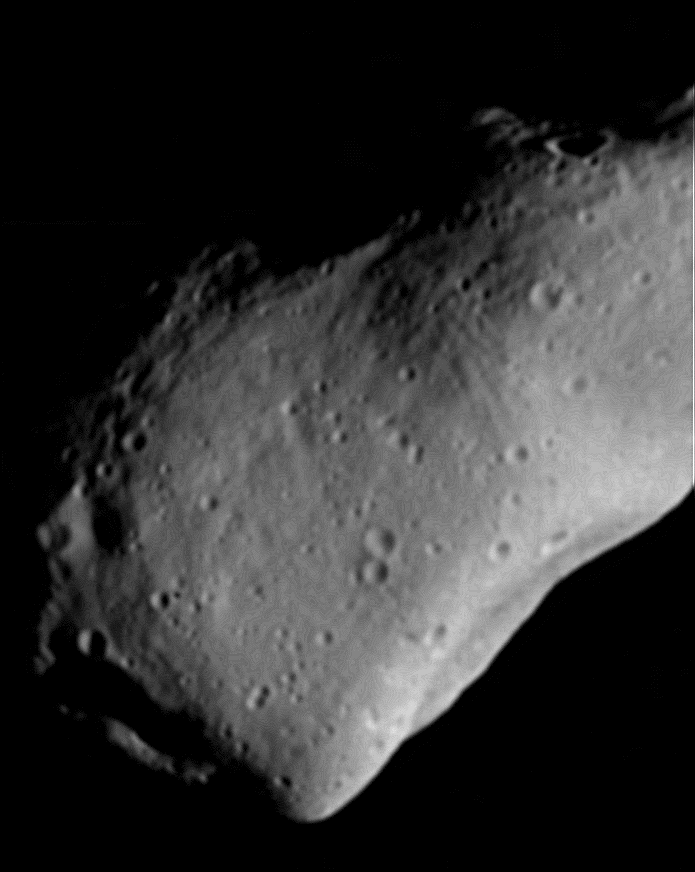

Asteroid 243 Ida was encountered on Saturday 28th August 1993, passed by at a distance of 2,390 KM. Some 95% of 243 Ida was imaged as 243 Ida was close to an equinox during the pass.
243 Ida was the first medium sized asteroid to be seen up close, with dimensions of 53.6 KM by 24 KM by 15.2 KM, rotates once every 4 Hours & 36 minutes in a retrograde direction, rotating east to west, so an observer on the surface would see the sky rise in the west & set in the east, with the 'north' polar star being Beta Sextantis in the faint constellation of Sextans.
243 Ida orbits the Sun within the central part of the Asteroid Belt, with a perihelion: 2.732 AU , with an aphelion of 2.991 AU, taking 4 years, 9 months & 24 days to orbit the Sun.
243 Ida is part of the Asteroid 158 Koronis family. A surprising discovery was a small 1.4 KM wide moon, since named Dactyl.
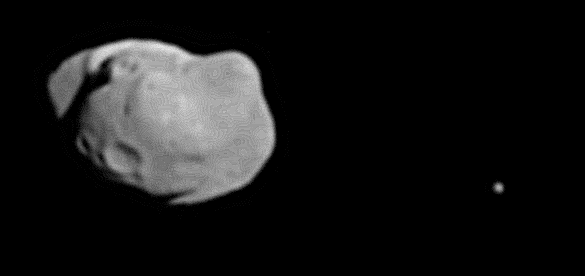
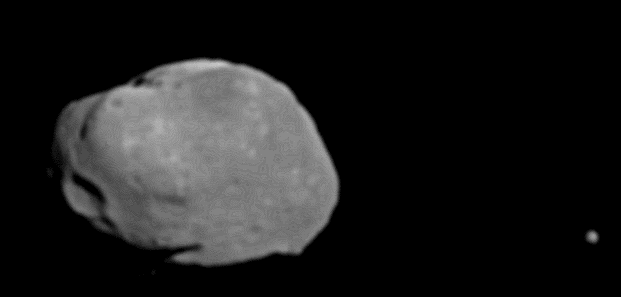

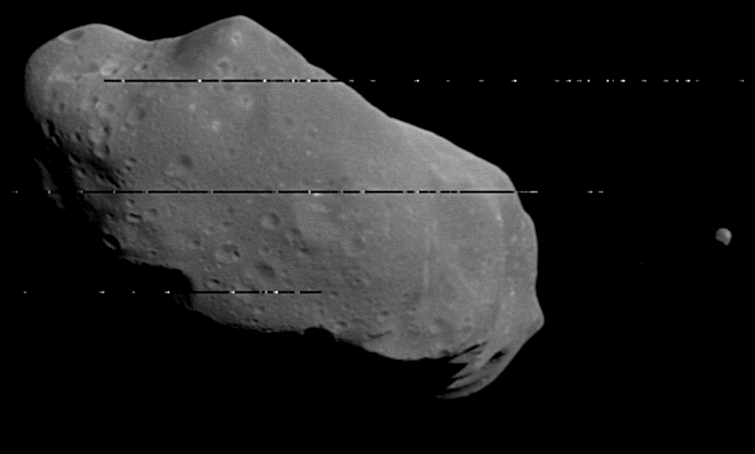
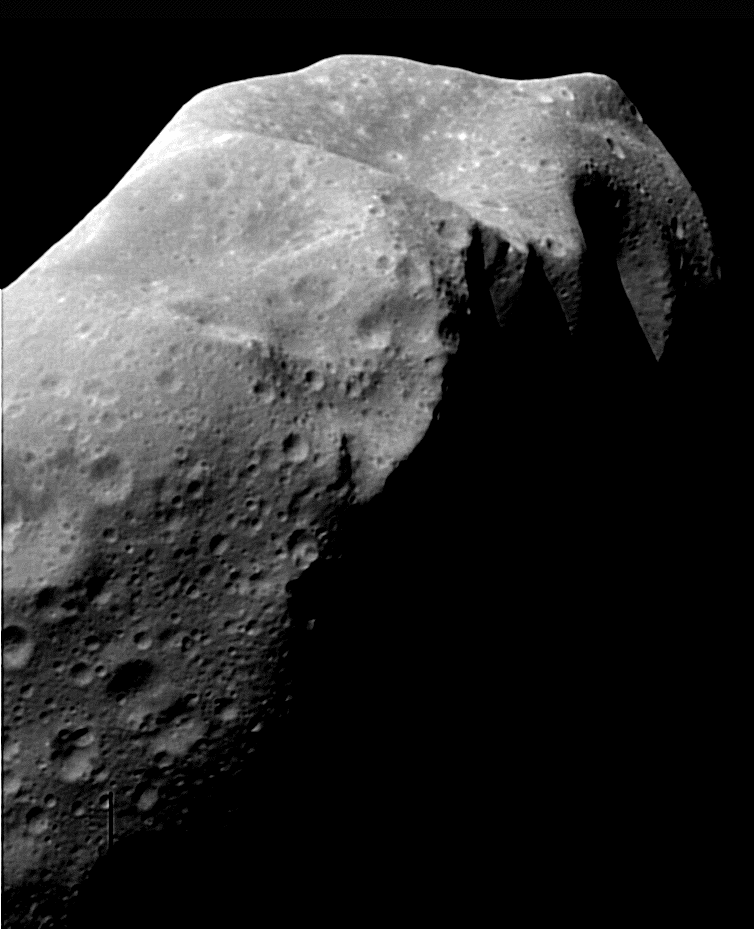
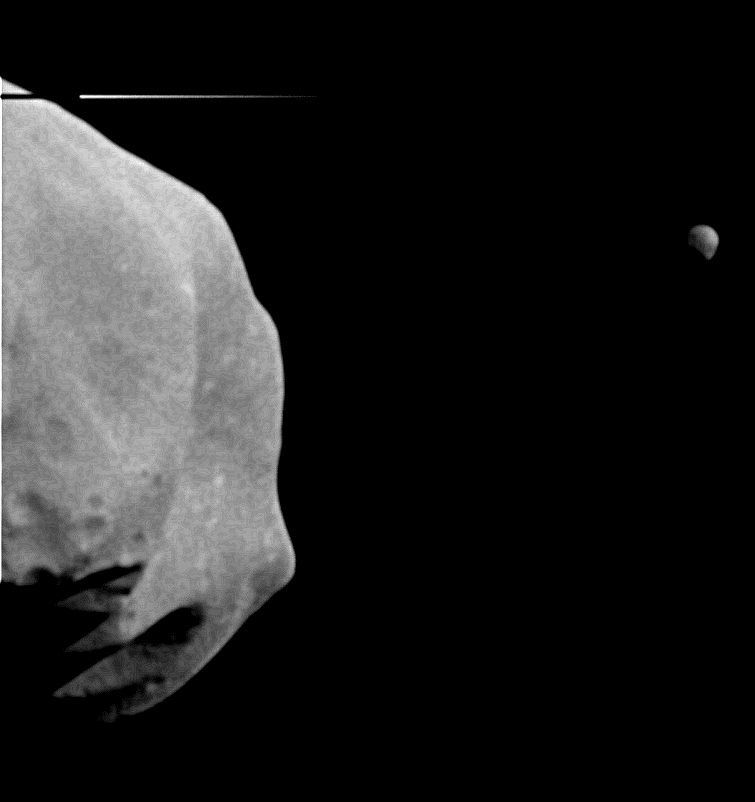

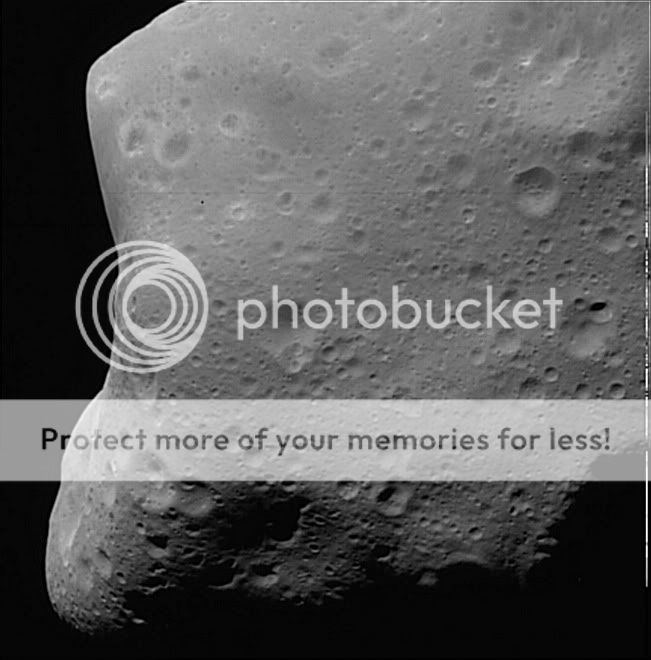

Boulders are visible here in the large crater.
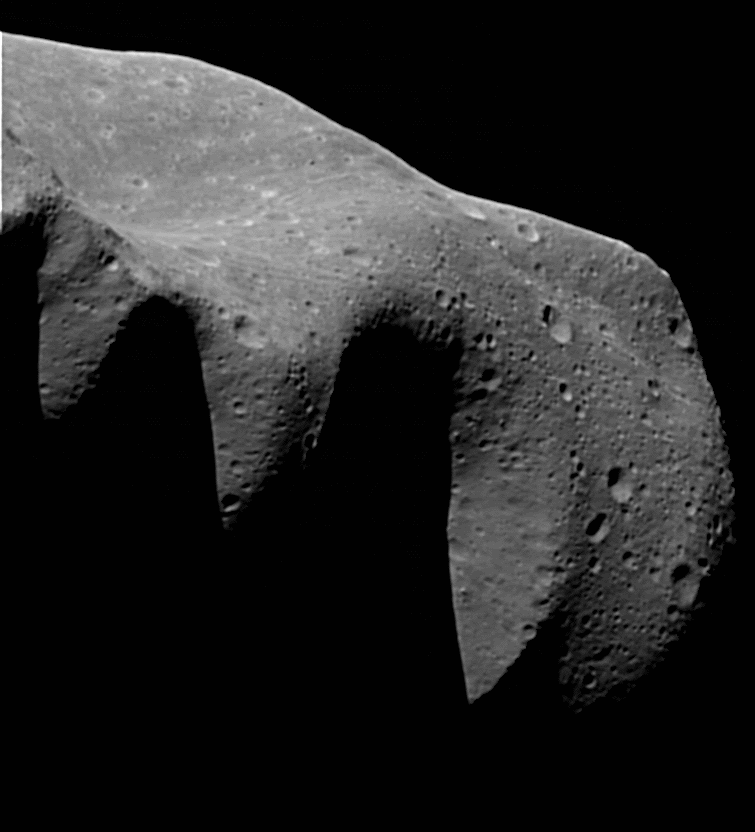

243 Ida moon Dactyl.
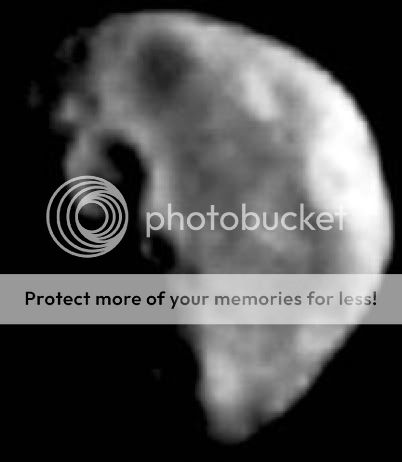
Night side of 243 Ida moon Dactyl, Idalit.
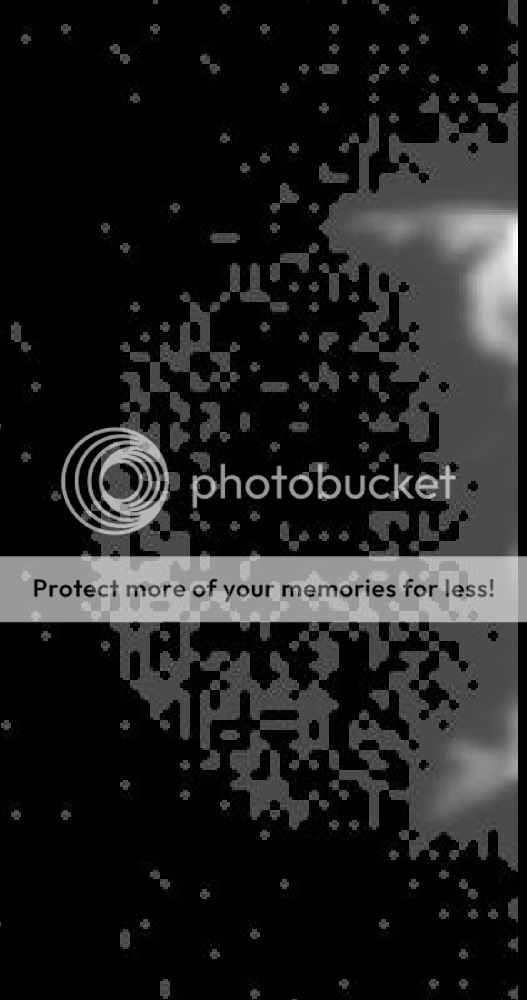
Andrew Brown.
Asteroid 951 Gaspra was encountered first on: Tuesday 29th October 1991, passed by at a distance of 1,600 KM over the night side, the sharpest images abtained from 5,300 KM with an impressive resolution of 54 metres. Some 80% of the asteroid was imaged during the approach except for the south polar region which was in darkness, as 951 Gaspra was in Northern Summer / Southern Winter during the pass.
951 Gaspra lacks relatively large craters, has many small ones & also has a few grooves, some 2 km long & are about 400 metres wide.
951 Gaspra has an axial tilt of 72 degrees & it's north celestial pole lies very close to M31 the Andromeda Galaxy.
951 Gaspra is a type S Silicate rich asteroid sized 18 KM by 10.5 KM by 9 KM rotating once every 7 hours & 3 minutes in a prograde direction, west to east as Earth.
951 Gaspra orbits the Sun within the inner part of the Asteroid Belt, with a perihelion: 1.825 AU (barely within the Asteroid Belt), with an aphelion of 2.954 AU, taking 3 years, 3 months & 12 days to orbit the Sun.
951 Gaspra is a member of the Asteroid 7 Flora family & 951 Gaspra is rich in Olivine (a type of basalt) & Pyroxine, a mantle rock.





Asteroid 243 Ida was encountered on Saturday 28th August 1993, passed by at a distance of 2,390 KM. Some 95% of 243 Ida was imaged as 243 Ida was close to an equinox during the pass.
243 Ida was the first medium sized asteroid to be seen up close, with dimensions of 53.6 KM by 24 KM by 15.2 KM, rotates once every 4 Hours & 36 minutes in a retrograde direction, rotating east to west, so an observer on the surface would see the sky rise in the west & set in the east, with the 'north' polar star being Beta Sextantis in the faint constellation of Sextans.
243 Ida orbits the Sun within the central part of the Asteroid Belt, with a perihelion: 2.732 AU , with an aphelion of 2.991 AU, taking 4 years, 9 months & 24 days to orbit the Sun.
243 Ida is part of the Asteroid 158 Koronis family. A surprising discovery was a small 1.4 KM wide moon, since named Dactyl.









Boulders are visible here in the large crater.


243 Ida moon Dactyl.

Night side of 243 Ida moon Dactyl, Idalit.

Andrew Brown.


